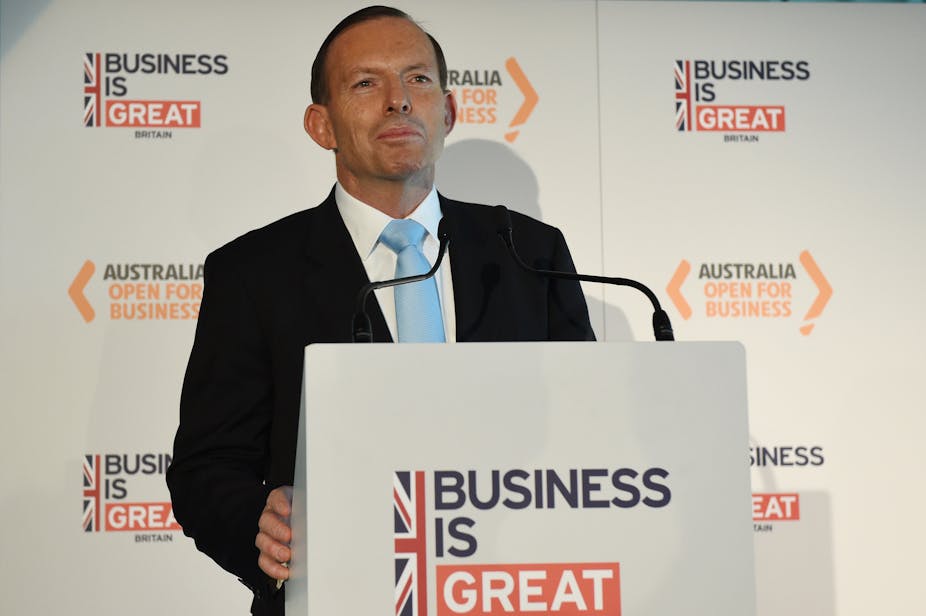The US-China climate deal provides a fresh burst of momentum after years of exhausting international negotiations in search of a worldwide agreement to tackle climate change.
It also confirms that Australia will need to agree and implement stronger emissions targets than are currently being discussed by the government. Or, to be more blunt, it shows beyond doubt that Australia is now a laggard on climate action.
Chinese President Xi said “we agreed to make sure that international climate change negotiations will reach an agreement” at next year’s Paris climate summit. His US counterpart Barack Obama added that “together, we hope to encourage all major economies to be ambitious - all countries, developing and developed - to work across some of the old divides so we can conclude a strong global climate agreement next year.”
The pledges will see the United States cut emissions by 26-28% below 2005 levels by 2025, while China will peak its greenhouse gas emissions by 2030 or before. What’s more, both sides say that they “intend to continue to work to increase ambition over time”.
These commitments are in line with the US and China commitments to the United Nations Framework Convention on Climate Change’s 2010 Cancun Agreement on emissions reductions by 2020. China’s pledge may go even further, although more details are needed for full analysis.
How does Australia measure up?
Australia’s formal commitment under the Cancun Agreement is to reduce emissions unconditionally by 5% by 2020 relative to 2000 levels, and by up to 25% depending on the action of other countries. This is where the oft-repeated commitment to reduce emissions by 5% comes from, but that is only a selective part of Australia’s commitment and the 5% figure is now plainly outdated.
In February, the Australian government’s Climate Change Authority analysed the action of other countries and recommended that, to stay consistent with the Cancun commitment, Australia’s target should now be emission reductions of 19% by 2020 and 40-60% by 2030, relative to 2000.
If there were any question about these recommended reduction targets, the US-China agreement puts them to bed. As an aside, the government has now committed to support the Climate Change Authority’s work, as part of an agreement with Clive Palmer, and asked it to further enquire into these targets and provide an interim report mid next year.
What is Australia currently doing to cut its emissions? The Renewable Energy Target is delivering significant emissions reductions. The recently passed Emissions Reduction Fund, the government’s centrepiece emissions policy, carries a significant risk of not delivering 5% emission reductions, according to the independent energy analyst RepuTex and others.
The US-China agreement highlights Australia’s false and dangerously backward debate about emission reductions. The debate should not be about whether the existing modest policies can deliver a 5% reduction, but rather how we achieve the much more credible reductions of 19% by 2020 and 40-60% by 2030.
What should Australia be doing?
Along with a strengthened renewable energy target, energy-efficiency measures, and stopping the waste of public money on subsidies that encourage pollution, a cost-effective, market-based mechanism can deliver these targets. This could be done with an emissions-trading scheme, or by developing the proposed “safeguard” mechanism that features in the Senate-amended version of the Emission Reduction Fund.
The other mechanism would be to follow President Obama’s route and use our state-based pollution laws to regulate substantial emission reductions. Given the business community’s lack of support for adequate cost-effective federal market-based policies, this route should be seriously considered by civil society and state governments.
Two other significant avenues are available to ensure that Australia achieves its fair share of global action to tackle climate change.
In the absence of adequate federal action to tackle carbon pollution, Australians are increasingly and effectively questioning the markets and investors of companies that are causing the pollution, and supporting those that contribute to a cleaner, more sustainable future. Look no further than the very rapid uptake of solar power, which is now on more than one in ten Australian household rooftops!
And of course, if we are not acting, Australians can exercise their views about our country doing its fair share of needed international effort to tackle climate change at the ballot box - as they did in 2007 when Australia was slow to ratify the Kyoto Protocol, the last international agreement to tackle climate change.

